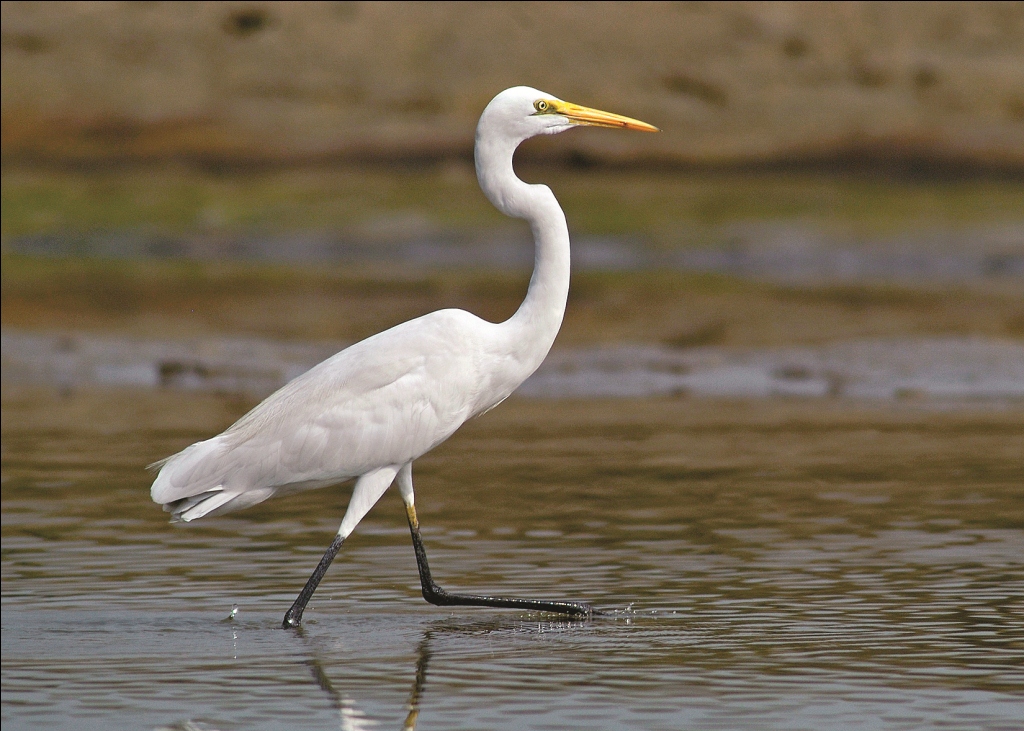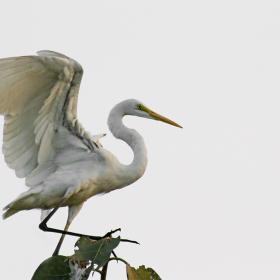- Browse
- Gallery
- Checklists
- Topography
- Glossary
- Bibliography
- Feedback
- About Us
Great Egret
Latin Name:
Casmerodius albus
Category:
Size:
90-102cm
Description:
Largest of the region’s white egrets; long-legged and very long-necked; can be told from Intermediate and other egrets by size, leaner, lankier appearance, and distinct bend in the neck; long gape extends beyond eye; breeding adult has short breast plumes, longer, finer plumes on back; black bill, blue facial skin; reddish upper legs; non-breeding bill yellow, no plumes; heavier, slower flight than Intermediate; solitary; not very gregarious; occasionally with other egrets; communal rooster and breeder.
Habitat:
Usually inland lakes, rivers, marshes; creeks, coastal waters, reefs.
Food:
Fish; aquatic animals
Distribution:
Lowland throughout the region



